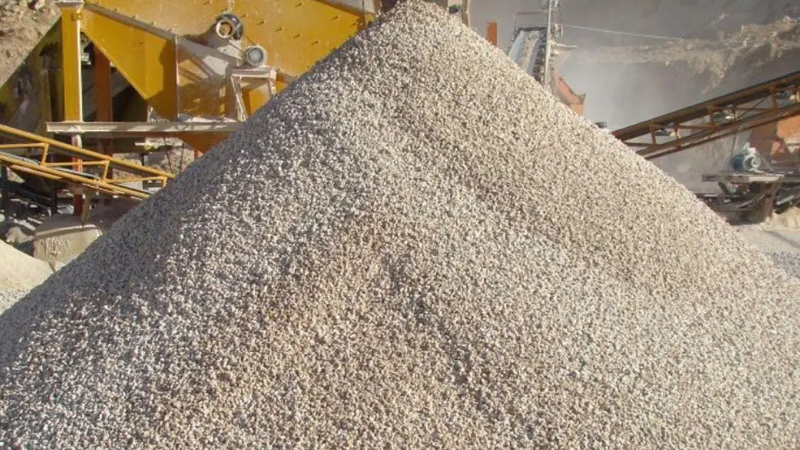
Construction sand and aggregates are vital for West Asia"s growth."
Construction sand, typically sourced from rivers, quarries, or coastal areas, is a fundamental component of concrete, mortar, and other construction materials. It constitutes a significant portion of the aggregate mix used in various construction applications. The construction sector in West Asia has been experiencing rapid growth, leading to an increased demand for construction sand. It is required for a wide range of projects, including residential buildings, commercial complexes, infrastructure development, and public works.
Governments in the region, such as those in the United Arab Emirates (UAE), Qatar, and Saudi Arabia, have implemented quality standards and regulations for construction materials, including sand. These standards ensure that the sand meets specific criteria for particle size, grading, cleanliness, and other properties to ensure the durability and strength of the construction materials. West Asian countries have diverse landscapes, including deserts, coastlines, and riverbeds, which provide sources of construction sand. Local availability of sand helps meet the demand and reduce dependence on imports.
In West Asia, the availability of construction sand depends on the specific country and its geography. Some countries in the region, such as Saudi Arabia and the UAE, have limited natural sources of construction sand due to their desert landscapes. As a result, they often rely on importing sand from other countries to meet their construction needs. For instance, Dubai, a city in the UAE, has been known to import sand from Australia to support its massive construction projects. This sand is primarily used for land reclamation and beach development rather than traditional construction purposes.
Gravel smaller than sand is called fine sand. Fine sand is usually easily found on the beach and in the river. In civil engineering, according to the classification, ASTM called fine sand for gravels smaller than 4.75 mm and coarser than 0.075 mm of. According to the Unified Soil Classification Standard, sand is classified into three categories: fine, medium and coarse. In slang, gravel is smaller than sand and coarser than sand. Sand is usually easily found on the beach and in the river. In civil engineering, according to ASTM classification, aggregates smaller than 75 mm and larger than 4.75 mm are called sand.
According to the standard classification of uniform soil, sand is divided into two categories: fine sand and coarse sand. Solid soil particles are called sand if their diameter is between 0.50 and 2 mm. Sand is in very commonly use in construction, often providing bulk, strength and stability to other construction materials such as asphalt, concrete, mortar, render, cement, and screed.
On the other hand, countries with access to coastal areas, such as Bahrain and Qatar, may have local sources of construction sand. They can extract sand from their shorelines, although this practice may have environmental implications, such as coastal erosion. It's important to note that the demand for construction sand in the region has been significant due to rapid urbanization and infrastructure development. However, concerns have been raised about the environmental impact of sand extraction, particularly in coastal areas, leading to stricter regulations in some countries.
The extraction of construction sand, particularly from riverbeds and coastal areas, can have environmental consequences. It may cause erosion, disrupt ecosystems, and impact water bodies. Governments in the region have implemented regulations to manage and control sand extraction, aiming to minimize its environmental impact. In some cases, West Asian countries import construction sand to supplement their domestic supply. Sources of imported sand can vary, and it may come from neighboring countries or be sourced from distant locations, such as Southeast Asia.
Construction sand often undergoes washing and processing to remove impurities, improve its quality, and meet specific requirements. This process involves the removal of silt, clay, and other contaminants, ensuring the sand is clean and suitable for construction purposes. In response to concerns about the environmental impact of sand extraction, alternative materials and technologies are being explored. For example, recycled concrete aggregates and manufactured sand (produced by crushing rocks) are gaining attention as substitutes for natural sand.
The prices of construction sand in the West Asian market can vary depending on factors such as availability, demand, quality, transportation costs, and government regulations. These factors may influence the overall cost of construction projects. Recognizing the importance of sustainable sand management, some West Asian countries are implementing measures to regulate sand extraction, promote responsible sourcing, and encourage the use of alternative materials.
-
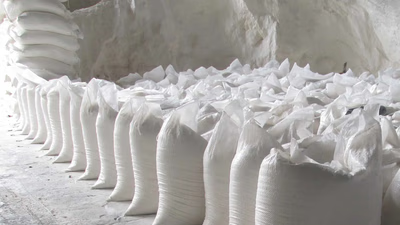
Gypsum plaster is a versatile building material widely used for interior finishes, providing a smooth and durable surface for walls and ceilings. It is a key component of drywall systems, offering benefits such as fire resistance and sound insulation. Gypsum plaster is also essential in repair and restoration work, allowing for the patching and leveling of damaged surfaces. Various types of gypsum plaster, including whitewash, micronized, ivory, Gipton, and Siwa plaster, cater to different construction needs, from decorative elements to moisture resistance. Gypsum plaster can be molded into intricate shapes for architectural detailing and is commonly applied in plaster skimming to achieve a uniform finish. Additionally, it is utilized in the construction of false ceilings, concealing services while enhancing aesthetics. Gypsum plaster"s acoustic properties make it suitable for sound treatment in spaces like theaters and studios. Its inherent fire resistance contributes to building safety, enabling the creation of fire-rated structures. The adaptability of gypsum plaster, combined with its various formulations, makes it a crucial material in the Middle East"s construction industry, supporting both residential and commercial projects.
-

Construction sand is essential for concrete and mortar, forming a key part of the aggregate mix used in various construction projects. The rapid growth of the construction sector in West Asia has led to increased demand for sand, necessary for residential, commercial, and infrastructure developments. Countries like the UAE, Qatar, and Saudi Arabia have implemented strict quality standards for construction materials, including sand, to ensure durability and strength. However, local availability varies; some nations depend on imports due to limited natural sources. For instance, Dubai imports sand from Australia for land reclamation projects. Coastal countries like Bahrain and Qatar can source sand locally, but this raises environmental concerns such as coastal erosion. The extraction of sand from riverbeds and coastal areas can disrupt ecosystems and lead to stricter regulations. To address environmental impacts, alternative materials like recycled concrete aggregates and manufactured sand are being explored.
The prices of construction sand fluctuate based on availability, demand, and regulations, affecting overall construction costs. Sustainable sand management practices are being adopted in some West Asian countries to promote responsible sourcing and alternative materials, ensuring the construction industry can meet its needs without compromising the environment.
-
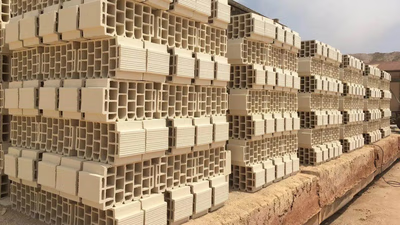
Concrete, steel, bricks, wood, and aggregates are essential materials in civil construction, each offering unique properties. Concrete, a mixture of cement, aggregates, and water, is favored for its strength and versatility. Steel is crucial for structural integrity, providing high strength and corrosion resistance. Bricks, made from clay or concrete, contribute to thermal insulation and aesthetics. Wood is valued for its renewability and insulation properties, while aggregates serve as fillers in various construction applications. Asphalt is used for paving, ensuring durability and smooth surfaces. Cement acts as a binding agent in concrete and mortar, while glass enhances natural light and aesthetics in buildings. Understanding these materials is vital for construction professionals to create durable structures.
The industry also sees innovations with new materials like bitumen membranes and plastic composites, which improve moisture resistance and insulation. Familiarity with both traditional and modern materials is essential for effective construction planning and execution.
-
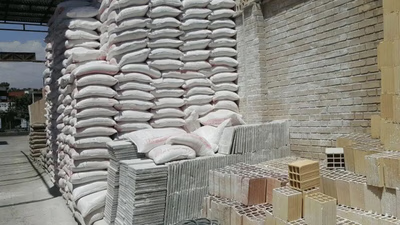
The Middle East"s construction sector is thriving, fueled by urbanization, population growth, and ambitious development plans. Major cities like Dubai, Abu Dhabi, and Doha are undergoing extensive construction, including skyscrapers and infrastructure projects, driven by government investments aimed at economic diversification. The region"s hosting of mega-events, such as the Dubai Expo 2020 and FIFA World Cup 2022, has further increased demand for building materials. A notable trend is the shift towards sustainable construction practices, with a rising interest in eco-friendly materials and energy-efficient designs. The Middle East is a significant player in the global cement market, exporting millions of tons of clinker, with Iraq being the largest buyer. The building materials market in West Asia includes both locally produced and imported materials, with local production focusing on cement, steel, and ceramics. The competitive landscape features both local companies and international suppliers, catering to diverse material preferences influenced by regional regulations and economic conditions. Advanced construction technologies, such as 3D printing and modular construction, are being adopted to enhance efficiency. Investments in infrastructure development are also substantial, requiring a wide array of building materials, thus presenting lucrative opportunities for suppliers and manufacturers.
-
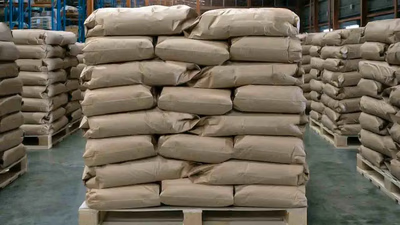
Cement is a crucial material in construction, with various types serving specific purposes. Ordinary Portland Cement (OPC) is the most widely used, suitable for general construction. Blended cements, like Pozzolanic Portland Cement (PPC), enhance durability and are ideal for aggressive environments. Rapid Hardening Cement is designed for projects requiring quick strength gain, while Sulphate Resistant Cement protects structures from sulfate attacks. High Alumina Cement offers heat resistance for high-temperature applications. Other types include Colored Cement for aesthetic finishes, Refractory Cement for extreme conditions, and Waterproofing Cement for moisture protection. Each type of cement is formulated to meet specific construction needs, ensuring structural integrity and longevity. The choice of cement impacts the overall performance of construction projects, making it essential for builders to understand the properties and applications of each type.
-

Clay is essential in construction, primarily for producing bricks and blocks. It is mixed with water, shaped, and fired to create durable materials. Clay bricks are favored for their thermal insulation and aesthetic appeal, making them ideal for load-bearing walls and facades. Traditional construction techniques like adobe and rammed earth utilize clay mixed with sand and organic fibers, resulting in sustainable structures with excellent thermal mass. Clay also serves as a plastering material, offering breathability and insulation for various surfaces. Additionally, clay roofing tiles are popular for their durability and weather resistance, particularly in hot climates. The soil"s composition, including clay"s fine grains, affects its construction properties. Clay"s ability to stabilize temperature in buildings enhances energy efficiency.
It is also used in drainage systems due to its corrosion resistance. Beyond construction, clay is utilized in landscaping and as a natural liner for landfills. Its thermal insulation properties are harnessed in lightweight clay blocks and aggregates. In geotechnical engineering, clay stabilizes soil and prevents erosion. Eco-friendly clay-based paints are emerging as alternatives to conventional options, promoting healthier indoor air quality. The versatility of clay in construction and landscaping highlights its importance in the Middle East"s trade landscape, particularly within B2B marketplaces focused on regional product listings and verified exporters.






